The surface of Saturn's moon Enceladus is a wasteland where temperatures rarely rise above –200°C. Near the southern pole, the ground rumbles before a great volcanic burst erupts through the ice. But it's not lava, it’s water.
Enceladus, like many of the icy moons of the Solar System’s outer planets, plays host to cryovolcanism, the seemingly contradictory term for volcanism that occurs many hundreds of degrees below freezing.
While this frosty geology is also thought to take place on several dwarf planets such as Ceres and Pluto, the Solar System's icy moons have shown planetary scientists what drives cryovolcanism.
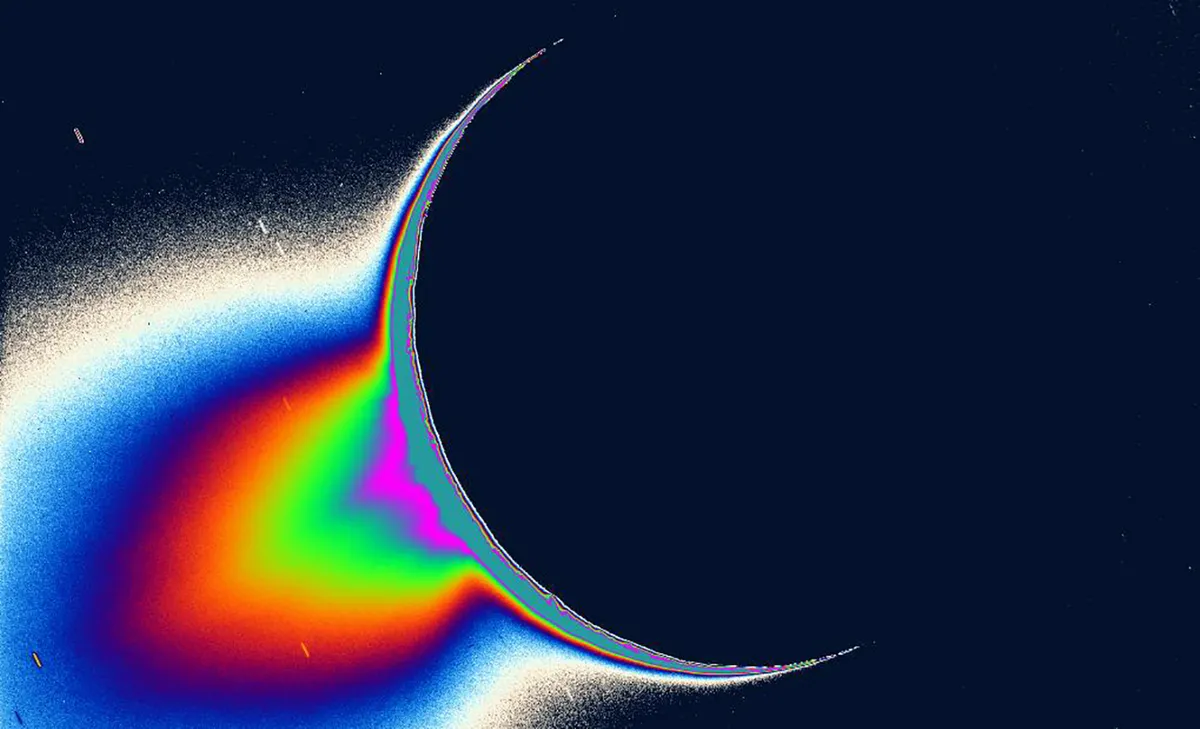
What causes cryovolcanism?
Cryovolcanism wouldn’t be possible without a liquid layer under the crust acting as a mantle.
The idea of a planet with cryovolcanic activity had never been considered before the Voyager missions, as it was thought the icy moons would be frozen solid.
They are so far from the Sun that their surface temperatures are several hundred degrees below 0ºC and all the residual heat – the thing that keeps our own planet’s mantle from solidifying – should have dissipated. Without a mantle, there can be no volcanism.
What planetary scientists didn’t account for, however, was the tidal tug-of-war between the various moons and their planet.This gravitational pull flexes the moons, keeping layers moving and preventing them from freezing completely.
Instead of being frozen, these moons have liquid water oceans dozens of kilometres deep, sandwiched between the icy crust and a rocky core.
In most cases, it is possible to identify the presence of such an ice layer by looking at the moon’s magnetic field. As the oceans contain some salts, they act as a conducting fluid, and their motion can effect or even create magnetic fields.
These fields can then be monitored either directly from orbit by a spacecraft, or indirectly by watching their aurora.

The discovery of cryovolcanism on Solar System moons
The very idea of a ‘frozen volcano’ is so strange that it was never even considered a possibility until the Voyager missions in 1979.
While flying past the moons of Jupiter and Saturn, the two spacecraft sent back images that looked very familiar to terrestrial volcanologists: they showed smooth lava plains, volcano-like mountains and craters.
Scientists analysing the images asked themselves whether this was some bizarre, frigid facsimile of the volcanism we know so well in the inner Solar System.
“It looked volcanic, only we knew it wouldn’t be molten rock because the density of these moons was too low to be rock,” says Rosaly Lopes, a planetary geologist at NASA’s Jet Propulsion Laboratory.
But the real smoking gun came in 1989, when Voyager 2 flew past Neptune’s moon Triton and saw a plume of water rising 8km above the surface – an icy eruption gushing from a mantle of liquid water beneath the surface.

Astronomers coined the term cryovolcanism to explain the new phenomenon where ice acted like rock and water was lava.
But the Voyagers zipped by their targets, giving only a tantalising glimpse of the worlds they passed. It wouldn’t be until Cassini began orbiting Saturn in 2004 that we got our first real view of a cryovolcanically active world.
When Cassini arrived at Enceladus, it found evidence of a liquid layer hiding underneath the crust, which was acting as a mantle.
The first direct evidence there was something actively happening in real time came in 2005, when the spacecraft saw a cloud of water above the surface.
Later, images taken from Cassini’s Imaging Science Subsystem confirmed the presence of jets coming from the moon’s surface, and it was clear that liquid water was bubbling up from a layer under Enceladus’s crust and dissipating out into space at 1,300 km per hour.
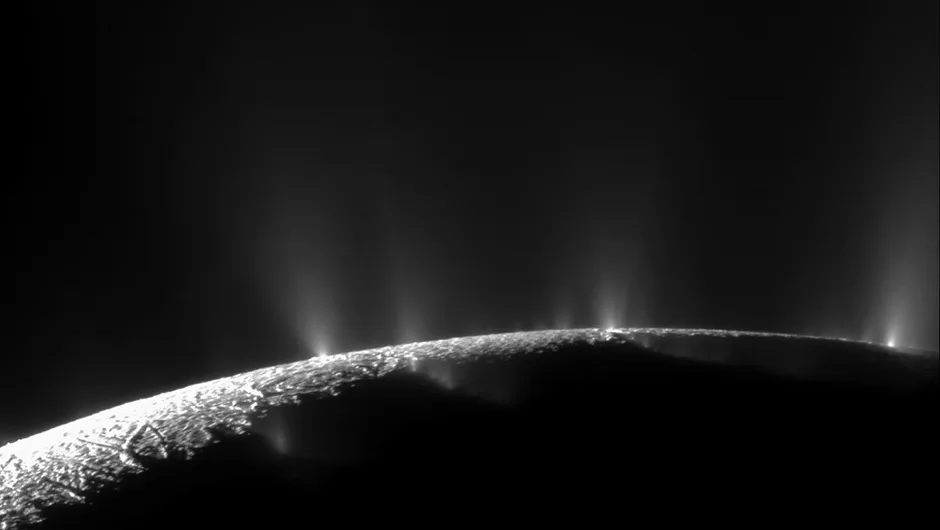
The mystery of ice lava
A similar cloud was seen coming from the south pole of the Jovian moon Europa in 2012, showing that cryovolcanism can be found throughout our Solar System. However, as such cryovolcanic processes do not, and have never existed on Earth, researchers initially had no idea how the cryolavas of these distant worlds would act.
"The first work on cryolavas compared the viscosity and rheology – the properties of how material moves – of cryolavas to the way that lava flows here on Earth," says Lynnae Quick, a planetary volcanologist from the Smithsonian National Air and Space Museum.
These studies found that in many ways the two can behave similarly, despite having completely different temperatures and compositions.

"The average lava on Earth might erupt at 1,250°C, but on the icy moons it erupts at 0°C. That’s considered freezing here on Earth, but in the outer Solar System it’s very hot, because some of these bodies are at about –130°C," explains Quick.
"On Earth we are thinking about molten rocks and in cryolavas we’re talking about solutions of water and salt that may have some ice crystals in them – so they’re more like a slush."
Although the icy satellites are mostly made from water, they do contain other dissolved substances such as nitrogen, methane and ammonia.These are only minor components of these moons, but they end up being hugely important to how the lavas of these planets act.
On Jupiter and Saturn, the lava is mostly composed of water with some ammonia and salts, but not many other water-soluble substances.
This means that it has a low viscosity and is more likely to have effusive eruptions, where lava slowly oozes from the ground, creating floodplains similar to the Moon’s mares.
Meanwhile, Uranus and Neptune’s moons have lava with far more ammonia and methanol dissolved in the water, making it much thicker and more likely to form domes, like Mount St Helens on Earth. The dissolved gases are also volatile, meaning they tend towards explosive eruptions.
However, there are differences between hot and cold lavas – most notably the fact that, while solid rocks are denser than lava, and so sink, ice floats in water.
"The icy crust actually floats on top of the liquid mantle. So how can you make this liquid go through the crust, when the crust is denser?" asks Lopes.
"There are various possibilities: the ammonia dissolved in the water could help; or maybe there is a squeezing process. People are still working on this."

The search for life on icy moons
Although the mechanism that causes the cryolava to erupt is unknown, the fact that it does could provide an investigative opportunity for future missions to these icy worlds.
The underwater oceans are thought to be the best places in the Solar System to hunt for extra-terrestrial life, but getting to them to have a look would require tunnelling through kilometres of ice.
Instead, researchers could look at the material already brought to the surface via eruptions.
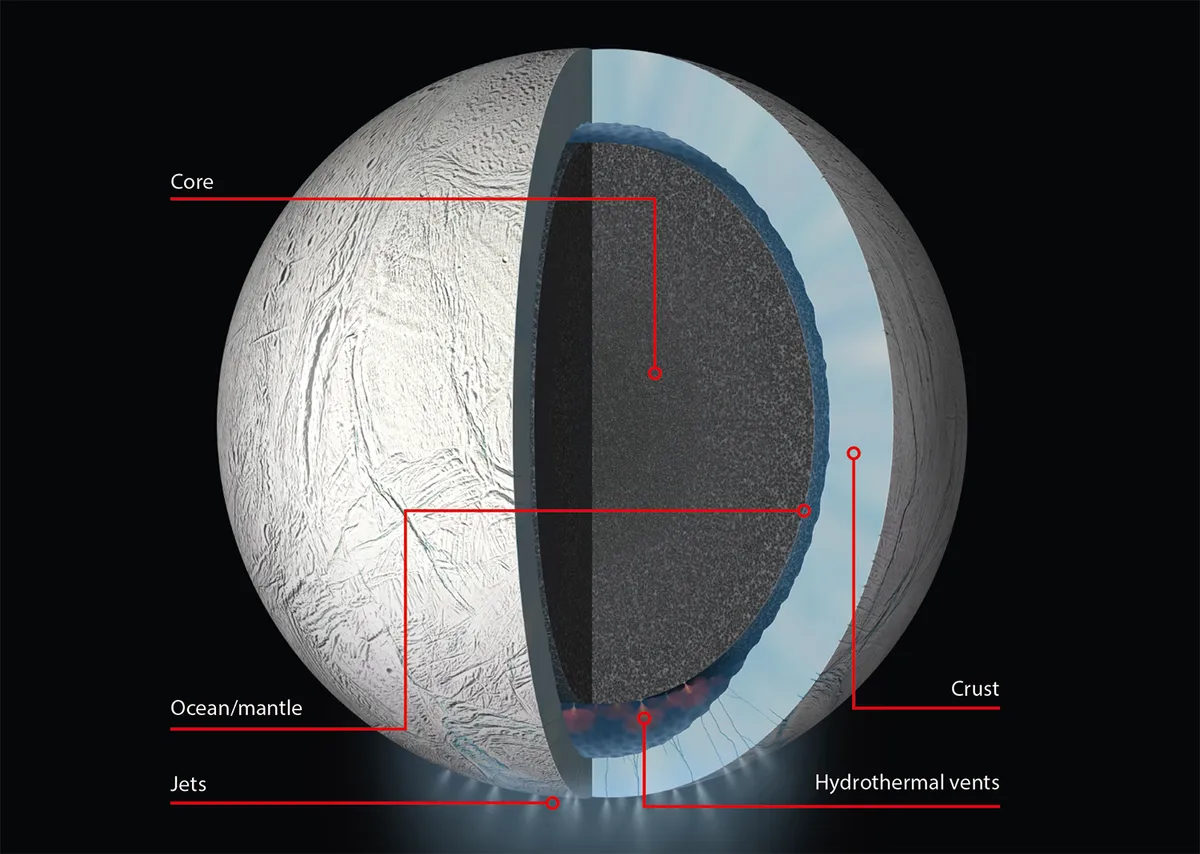
An early version of such a mission was carried out in 2015, when Cassini flew through one of the plumes over Enceladus.
It found a high level of molecular hydrogen in the water, which could indicate the presence of hydrothermal vents on the ocean floor – potential hotspots for the formation of life.
Cassini was built before we knew such plumes existed and it had no specialist sampling equipment.
But the Europa Clipper, which is due to start making its way to the Jupiter system in 2024, will have instruments designed with the goal of flying through these plumes and sampling their chemistry.
"We really want to investigate the habitability of the moon with Europa Clipper," says Quick. "Once we have all the information telling us what environments on Europa might be most habitable, we can look for the best place to set down a future lander to actually get samples to analyse.
"I would like to put a lander by a cryolava flow and do a little scraping to find out the habitability of that area."
For more on habitability, read our guide What makes a planet habitable?
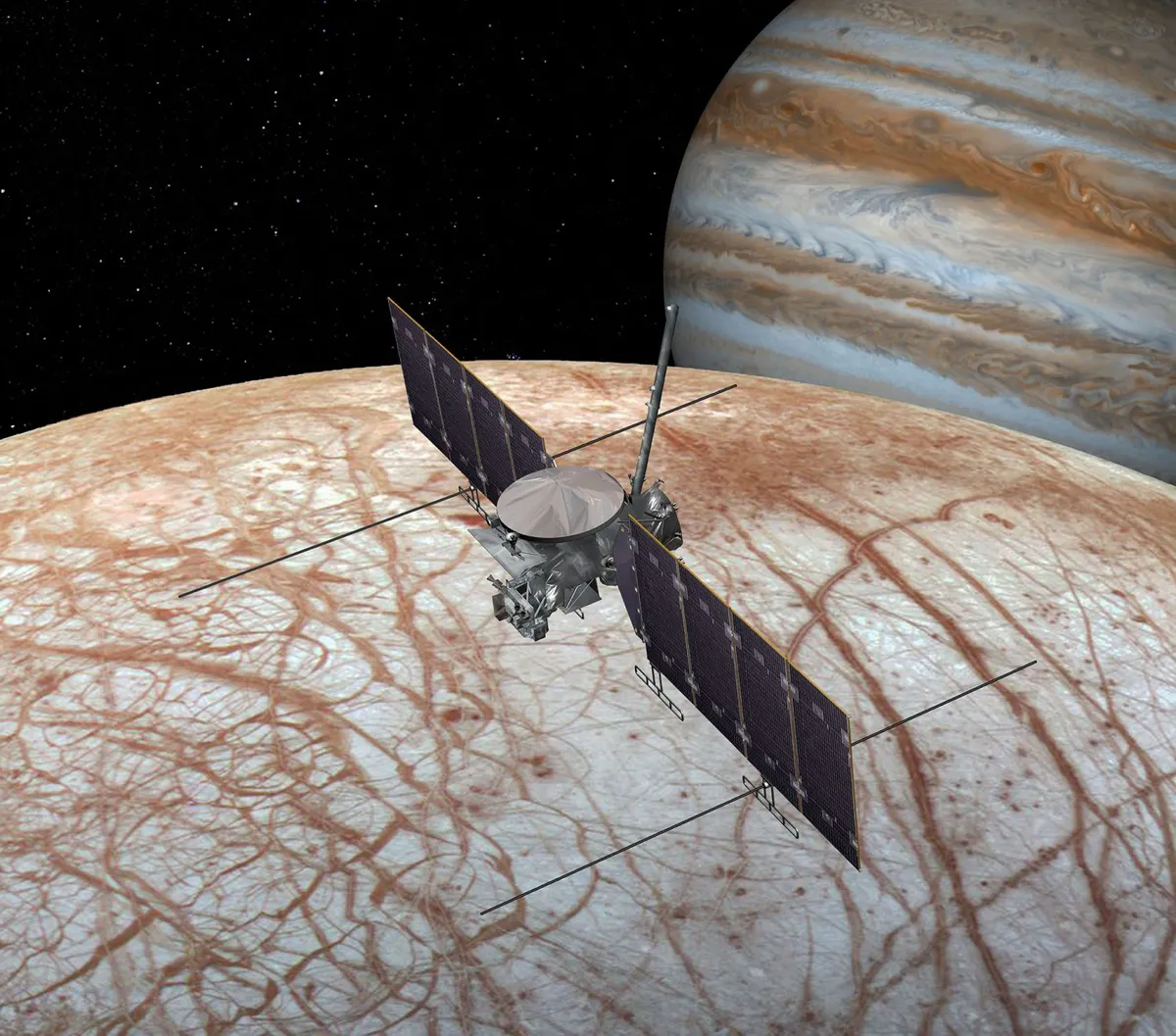
"These lavas could be cycling organics between the surface and subsurface, in which case they could play a big role in creating habitable environments by bringing nutrients from the ocean to the surface and vice versa."
The way that organic matter is cycled between the exterior and interior of the planet will also be studied – not just on Europa, but on Ganymede and Callisto too – by ESA’s Jupiter Icy Moons Explorer (JUICE), due for launch in 2022.
The mysteries of these icy worlds will be peeled back over the coming years as cryovolcanism gives us the opportunity to examine them, both inside and out.
But if there is one thing that these frozen moons have already taught us, it’s that even though a body may look like a frozen wasteland at first glance, it doesn’t mean that there isn’t something lying hidden beneath the surface, waiting to burst free.
4 ways to identify cryovolcanism
1
Water plumes

Water plumes have been spotted over Triton, Enceladus and Europa. These are enormous geysers of water that burst up through the planet’s crust, sending plumes of water up to 100km into space.
2
Young plains
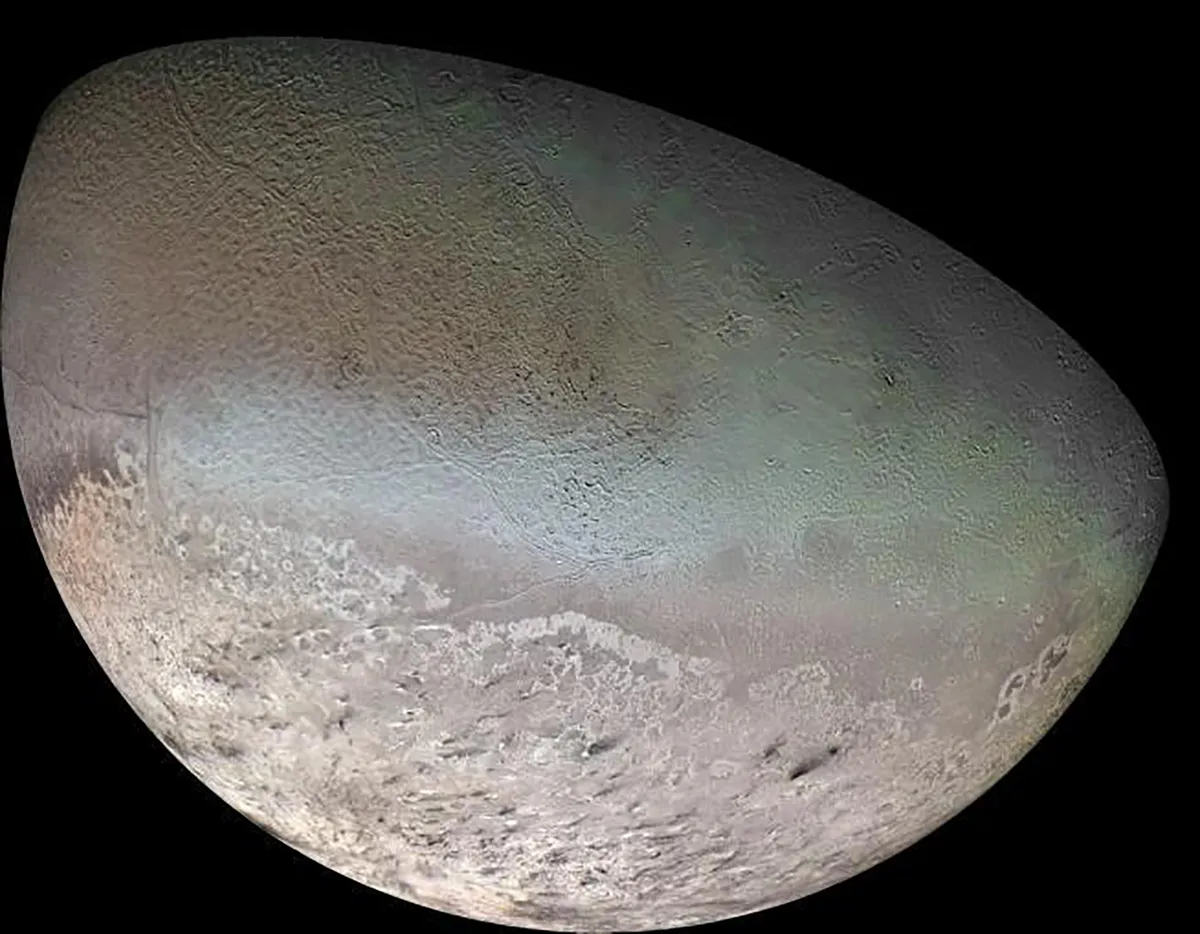
Worlds with cryovolcanism often have highly reflective, smooth areas that are relatively free of craters, such as the Cipango Planum on Triton. This is because cryolava flows over craters made by meteors.
3
Volcanoes
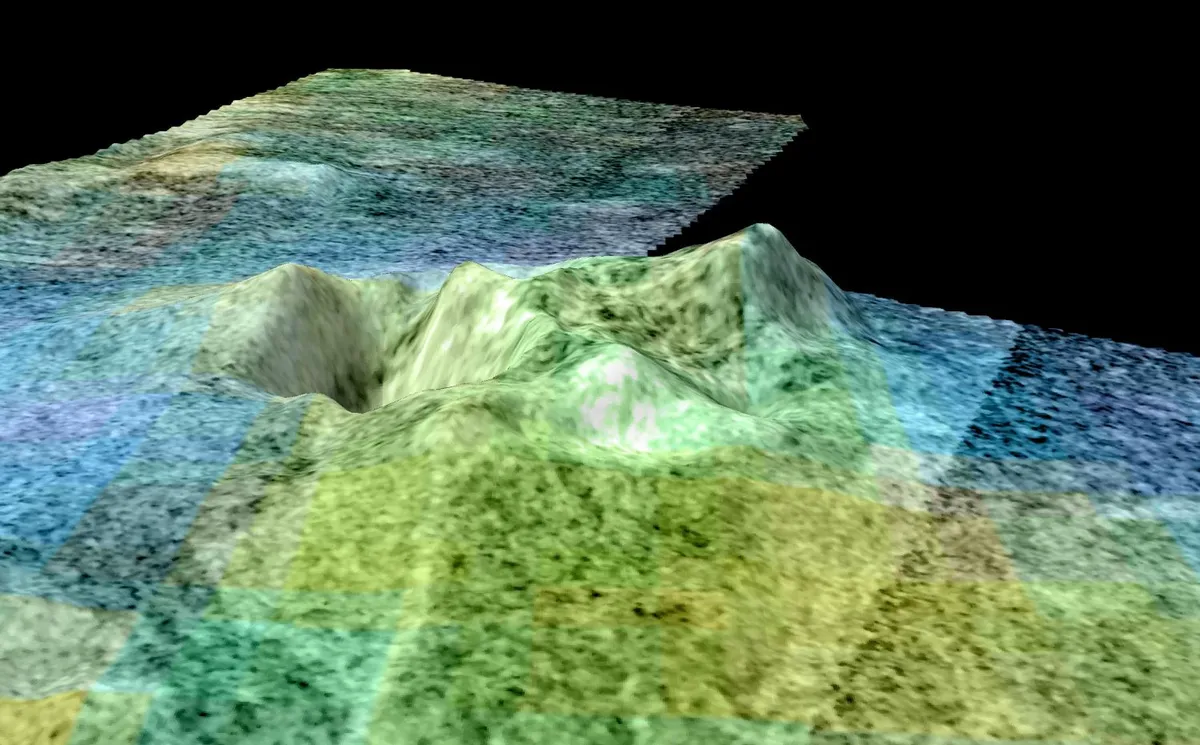
Several of the mountains on Saturn’s moon Titan could in reality be volcanoes, such as the Sotra Facula region and its highest peak, Doom Mons. However, it is easy to mistake tectonic peaks for volcanic ones.
4
Tiger stripes
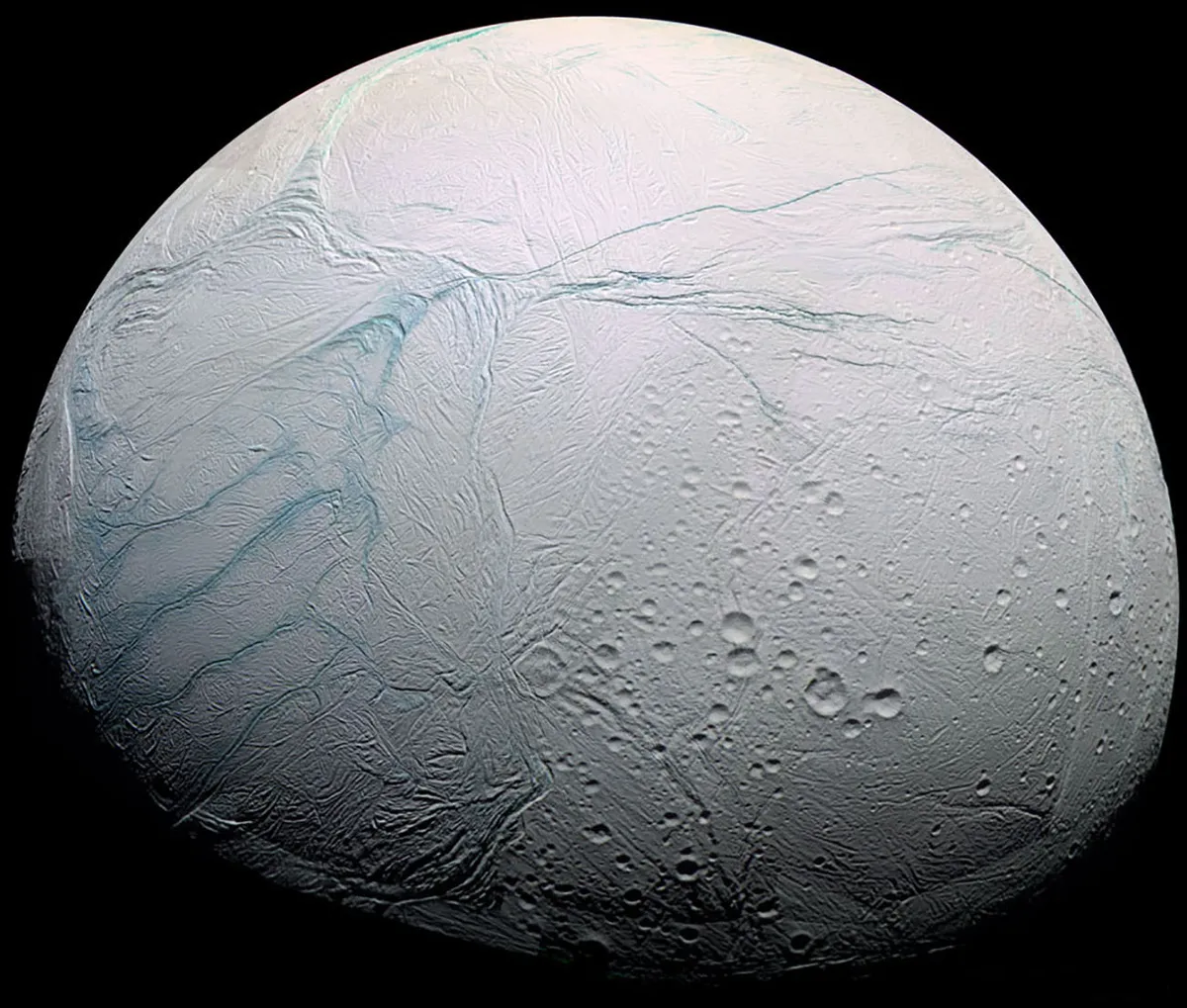
On Enceladus, Cassini spotted four rifts known as ‘tiger stripes’, below where the plumes were spotted. These were 70°C hotter than the rest of the moon, suggesting that warm water was escaping from the interior.
Ezzy Pearson is BBCSky atNight Magazine’s News Editor and holds a PhD in extragalactic astronomy. This article originally appeared in the April 2018 issue of BBC Sky at Night Magazine.
